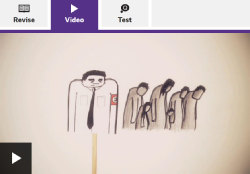|
CLICK BUTTON TO GO |
|
|
|
|
|
|
|
|
|
|
|
|
|
Videos |
|
|
|
|
|
|
|
|
|
|
|
|
|
PART 1 T O P I C |
|
|
|
|
|
|
|
|
|
|
|
|
|
|
|
|
|
|
JewishWikipedia.info
|
The Holocaust |
The Holocaust |
The International School for Holocaust Studies |
|
The Holocaust Educational Trust |
A Teachers |
Holocaust Survivor Shares Horror of Nazi Atrocities |
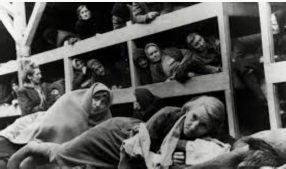
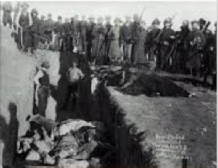
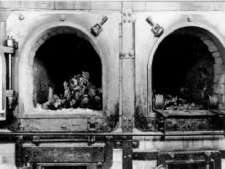
EXAMPLES OF STUDENTS' TOUGHEST QUESTIONS
As students study the Holocaust, they will — and should — have lots of questions. Answering and engaging in discussion about these and other questions that arise in the classroom is a valuable opportunity to refute incorrect information,
add additional content and context, and deepen learning.
Echoes and Reflections
(Go to the site and click on the question to see a suggested answer)
1 Why did Hitler choose the swastika to be the symbol of the Nazi Party?
- Why didn’t Germans speak out against laws
that stripped Jews of their rights
after the Nazis came to power? - Why didn’t Jews leave Germany
when they saw what was happening in the 1930s? - Why were so many countries, including the United States,
unwilling to accept Jews who wanted to leave Germany? - Did people who lived near ghettos and camps know what was going on?
Why didn’t they do anything to stop what was happening, were they afraid? - When did the United States realize what was happening to Jews in Europe
and what was the response? - What was the role of the Catholic Church during the Holocaust?
- Why didn’t the Jews fight back?
- Why were Jews singled out for mass murder; why did people hate them so much?
- How were the Nazis able to identify who was Jewish,
especially in places where they were assimilated?
10 Did some Jews collaborate with the Nazis?s of Critical Questions
Go to 36 Questions and Answers About the Holocaust/
Victims of the Nazi Holocaust and Nazi Persecution
THE HOLOCAUST
This free course explores the Holocaust, as the destruction of European Jewry is commonly known. The mass killing represented by the Holocaust raises many questions concerning the development of European civilisation during the twentieth century.
This course, therefore, covers essential ground
if you wish to understand this development.
The Open University
I WITNESS
I Witness
ABOUT US
IWitness is an educational website developed by USC Shoah Foundation – The Institute for Visual History and Education that provides access to more than 1,500 full life histories, testimonies of survivors and witnesses to the Holocaust and other genocides for guided exploration. IWitness brings the human stories of the Institute's Visual History Archive to secondary school teachers and their students via engaging multimedia-learning activities. Designed to be participatory, academic and student-driven, IWitness addresses education standards from the Common Core State Standards Initiative (United States) and the International Society for Technology in Education, among others.
You can watch a short video demonstration of IWitness here.
EMPOWERING STUDENTS
You have access to an online tool that enables you to learn first hand from survivors and witnesses of the Holocaust, giving you the opportunity to enrich your understanding of how this historical event had an impact on individual lives.
IWitness offers you the chance to take your education to the next level.
- You can watch testimony and learn about the full life stories of men and women who survived and witnessed the Holocaust.
- Build your own video projects using IWitness's built-in online video editor.
- You can search for video testimony and photos that can add to your classroom projects and presentations in IWitness.
- The built-in encyclopedia and glossary are great sources for better understanding the testimonies and the history reflected in IWitness.
- Along the way, you will learn important digital media skills, including searching and ethical remixing, that will prepare you for becoming a digital citizen in the 21st century.
- Take the first step and let your teacher know how he or she can bring IWitness to your classroom .
THE INTERNATIONAL SCHOOL FOR HOLOCAUST STUDIES
Yad Vashem
Yad Vashem’s International School for Holocaust Studies (ISHS), established in 1993, focuses upon – and excels in – providing quality Holocaust education to diverse audiences from Israel and across the world. In order to achieve this, the ISHS trains educators to teach the Holocaust, develops pedagogic and didactic tools to be utilized by teachers, and conducts educational workshops for youth and soldiers from Israel and abroad. The ISHS has developed a unique multi-disciplinary educational philosophy, based upon teaching the Holocaust in an age-appropriate manner. Educators are taught to bring their students safely in and safely out of the learning environment with the provision of age and level appropriate materials to aid the learning process.
The International School for Holocaust Studies is the only school of its kind in the world, and our staff is firmly committed to Holocaust education. We believe it is our mission to enrich the knowledge of educators from around the world as well as to provide them with pedagogical guidelines and age-appropriate tools for teaching this difficult subject matter. Our interdisciplinary approach to Holocaust education - through art, music, literature, theology and drama - allows students to gain a broader understanding of what happened during this period.
The International School for Holocaust Studies includes 17 classrooms, Pedagogical Center and auditorium. Every year we host over 350,000 schoolchildren, university students, military and security personnel, as well as thousands of educators from around the world.
- Online Courses
- Educational Materials
- Educational Videos
- International Activities
- International Projects
- International Conferences
- e-Newsletter for Holocaust Educators
- Educational Materials in Other Languages
UCL
AN EDUCATIONAL IMPERATIVE -
“You can’t interpret the world without understanding the Holocaust”
UCL Centre for Holocaust Education, Paul Salmons, March 2014
Not long ago, and not far from where we live, ordinary people across Europe became complicit in the murder of their neighbours. What will young people’s education amount to if they do not confront this appalling truth?
For the Holocaust was a catastrophe not only for its millions of victims but also for our view of ourselves, of who we are, our faith in human nature, and a belief in western progress and ‘civilization’. If we are not prepared to consider what went wrong in modern society that allowed state persecution of political opponents; mass murder of the disabled; European genocide of the Roma (Gypsies); and ultimately led to an attempt to murder every last Jewish man, woman and child, then how can we consider ourselves to be educated people at all?
“You can’t interpret the world without understanding the Holocaust”
Learning about such events can be profoundly disturbing. Our programme helps teachers to support young people as they deal with powerful and sometimes disorientating feelings, helping them to express themselves and to develop their emotional literacy. It also explores how and why the Holocaust happened through detailed historical study of the most extensively documented, intensively researched, and best understood genocide in human history.
This combination of the affective and the cognitive realms is essential if we are to both strengthen a commitment to genocide prevention and, through careful comparison with other examples of mass violence, to better identify the warning signs of future atrocities and to understand what sort of interventions might be available in order to prevent them.
What do students know and understand about the Holocaust?
UCL Evidence from English secondary schools 2014
THE HOLOCAUST EDUCATIONAL TRUST (IHRA)
Internationally recognised for its expertise in training teachers
in Holocaust pedagogy best practice.
The International Holocaust Education Alliance (IHRA) have more than 1,500 teachers take part in our programmes each year. We offer free professional training workshops and Continuing Professional Development (CPD) courses to new and experienced teachers across the UK. Our sessions are delivered by an experienced team of trainers, and focus on pedagogical issues as well as demonstrating practical ideas, and our free online classroom resources.
More information about our teacher training programmes can be found below but if you have any questions please contact us at [email protected].
Bespoke Workshops.
Our free pedagogical workshops are delivered across the UK and are adaptable to meet the needs of your school or institution. Sessions can be targeted for one subject area or cross-curricular groups.
The Trust works with Initial Teacher Training providers, through universities, school-centred schemes and employment-based programmes, as well as providing Continuing Professional Development (CPD) and in-service training to experienced school staff.
We partner with local authorities, academy federations and individual schools to deliver regional CPD training seminars.
Intensive CPD Courses
The UK-based Exploring the Holocaust residential course, held every February, is especially aimed at those new to Holocaust teaching. Educational sessions are delivered by experts from the Holocaust Educational Trust and prominent academics engaging with the latest scholarship on the Holocaust. The course also explores the benefits and challenges of cross-curricular collaboration.
Our annual teacher training course held at Yad Vashem in Israel is composed of three intensive stages: a one-day introductory seminar in London, a 10-day visit to Yad Vashem and a follow-up weekend in the Midlands.
Teacher Study Visits are advanced site-based training courses. Past visits have been held in France, Germany, Hungary, Lithuania and Poland. The on-site sessions examine human stories and approaches to site-based education.
CENTRE FOR HOLOCAUST EDUCATION
Centre for Holocaust Education
Tools for teaching and learning. You can find information on our acclaimed classroom materials, resources and lesson plans. Some of these are open-access, others are linked to particular CPD programmes.
A TEACHERS GUIDE TO THE HOLOCAUST
Florida Center for Instructional Technology
Approximately 11 million people were killed because of Nazi genocidal policy. It was the explicit aim of Hitler's regime to create a European world both dominated and populated by the "Aryan" race. The Nazi machinery was dedicated to eradicating millions of people it deemed undesirable. Some people were undesirable by Nazi standards because of who they were,their genetic or cultural origins, or health conditions. These included Jews, Gypsies, Poles and other Slavs, and people with physical or mental disabilities. Others were Nazi victims because of what they did. These victims of the Nazi regime included Jehovah's Witnesses, homosexuals, the dissenting clergy, Communists, Socialists, asocials, and other political enemies.
Those believed by Hitler and the Nazis to be enemies of the state were banished to camps. Inside the concentration camps, prisoners were forced to wear various colored triangles, each color denoting a different group. The letters on the triangular badges designate the prisoners' countries of origin.
JEWS
Antisemitism was a familiar part of European political life in the 1800s. Political antisemitism was preceded by centuries of religious persecution of Europe's Jews. There is evidence as early as 1919 that Hitler had a strong hatred of Jews. As Chancellor and later Reichsf�hrer, Hitler translated these intense feelings into a series of policies and statutes which progressively eroded the rights of German Jews from 1933-1939.
At first, the Nazis boycotted Jewish businesses for one day in April 1933. Then legislation excluded Jews from certain professions. The Nuremberg Laws created very detailed Nazi definitions of who was Jewish. Many people who never considered themselves Jewish suddenly became targets of Nazi persecution.
The world accessible to German Jews narrowed. Jews were no longer allowed to enter cinemas, theaters, swimming pools, and resorts. The publishing of Jewish newspapers was suspended. Jews were required to carry identification cards and to wear Star of David badges. On one night, Nazis burned synagogues and vandalized Jewish businesses. The arrests and murders that followed intensified the fear Jews felt. Next, Jewish children were barred from schools. Curfews restricted Jews' time of travel and Jews were banned from public places. Germany began to expel Jews from within its borders.
Germany's invasion of Poland in late 1939 radicalized the Nazi regime's policy toward Jews. Hitler turned to wholesale death of the European Jewish population. He swept Jewish populations into ghettos in eastern Europe. Simultaneously, mobile squads killed millions. The next step was to send Jews to squalid concentration and death camps. Approximately six million died for one reason: they were Jewish.
ROMA (GYPSIES)
The Roma, a nomadic people believed to have come originally from northwest India, consisted of several tribes or nations. Most of the Roma who had settled in Germany belonged to the Sinti nation. The Sinti and Roma had been persecuted for centuries. The Nazi regime continued the persecution, viewing the Roma both as asocial and as racially inferior to Germans.
Although the Nuremberg Laws did not specifically mention them, Roma were included in the implementation of the statutes. Like Jews, they were deprived of their civil rights. In June 1936, a Central Office to "Combat the Gypsy Nuisance" opened in Munich. By 1938, Sinti and Roma were being deported to concentration camps.
The fate of the Romani peoples paralleled that of the Jews after the beginning of World War II: systematic deportation and murder. First, western European Roma were resettled in ghettos. Then they were sent to concentration and extermination camps. Many Roma in the east--Russia, Poland, and the Balkans--were shot by the Einsatzgruppen. In total, hundreds of thousands of Sinti and Roma were killed during the Holocaust.
Further information about the Sinti and Roma, a photo, and links to other Web sites.
POLES AND OTHER SLAVS
It is often forgotten that Christian Poles and other Slavs, notably Ukrainians and Byelorussians, were also primary targets of Nazi Germany hatred during World War II. To the Nazis, the Slavs were considered Untermenschen,or subhumans, and nothing more than obstacles to gaining territory necessary for the superior German race. This philosophy is apparent in Hitler's statement, "The destruction of Poland is our primary task. The aim is not the arrival at a certain line but the annihilation of living forces...."
The combination of a Nazi genocidal policy and the Nazis' thirst for more living space resulted in disaster for Polish, Ukrainian, and Byelorussian populations. Millions of Slavs were deported to Germany for forced labor. Intelligentsia, consisting of teachers, physicians, clergy, business owners, attorneys, engineers, landowners, and writers, were imprisoned in concentration camps or publicly executed. Tens of thousands of Ukrainians were executed by mobile killing squads, or Einsatzgruppen.
Those who were sent to camps had to wear badges, of course. There was not one badge designation for Poles and other Slavs. Rather, a Polish or Slavic person was categorized as a criminal, asocial, political prisoner, and so on.
Millions upon millions of non-Jews were slaughtered in the Slavic countries.
POLITICAL DISSIDENTS AND DISSENTING CLERGY
The remnants of the Communist and Socialist parties and members of the trade unions resisted the Nazi regime. Especially in the early years of the Third Reich, political prisoners were a significant portion of the concentration camp inmates. At the end of July 1933, about 27,000 political prisoners were being held in concentration camps in "protective custody." During its twelve year existence, Dachau was always a camp for political prisoners.
In 1933, the Roman Catholic Church signed a concordat or agreement with the new Nazi government, recognizing the legitimacy of the Third Reich. The Protestant Church was united into a single Reich Church under one bishop. In September 1933, Martin Niemöller, a pastor of a fashionable church in Berlin, set up a Pastors' Emergency League which led to the formation of the anti-Nazi Confessional Church. This church wrote a memorandum to Hitler attacking the government's anti-Christian campaign, policies of antisemitism, and terrorizing tactics. Hitler responded with a crackdown on members of the Confessional Church. Hundreds of dissenting clergy were arrested, many were imprisoned, and also executed.
PERSONS WITH PHYSICAL OR MENTAL DISABILITIES
These people never were assigned a badge because they were rarely sent to concentration camps. Persons with physical or mental disabilities threatened the Nazi plan for human "perfection."
In 1934, forced sterilization programs sterilized 300,000 - 400,000 people, mainly those in mental hospitals and other institutions. Propaganda was distributed which helped build public support for these government policies. Persons who were mentally ill or physically disabled were stigmatized, while the costs of care were emphasized in propaganda campaigns.
In 1939, a Nazi "euthanasia program" began. This term is used as a euphemism for the Nazi plan to murder those with physical or mental defects. Unlike the sterilization program, the "euthanasia" program was conducted in secrecy. "Operation T4" was the code term used to designate this killing project.
As word leaked out about the "euthanasia" program, some church leaders, parents of victims, physicians, and judges protested the killings. Hitler ordered the end of Operation T4 in August 1941. However, the murders continued in a decentralized manner. Doctors were encouraged to kill patients with disabilities by starvation, poisoning, or injection.
JEHOVAH'S WITNESSES
In 1933, the Jehovah's Witnesses in Germany totaled about twenty thousand. Although their religious meetings were outlawed after the Nazi rise to power, many continued to practice their religion. In 1934, Jehovah's Witnesses attempted to fend off Nazi attacks by having congregations send letters to the government explaining their beliefs and political neutrality.
The Nazis did not tolerate the Jehovah's Witnesses' refusal, which was based on religious principles, to salute flags, to raise their arms to "Heil Hitler,"or to serve in the German army. The group was banned by national law in April 1935. Those Witnesses who defied the ban on their activities were arrested and sent to prisons and concentration camps.
Marked with purple triangular badges, the Witnesses were a relatively small group of prisoners in the concentration camps, numbering several hundred per camp. If Jehovah's Witnesses within the camps signed documents renouncing their religious beliefs, they would be freed. Very few, even in the face of torture, signed the declarations. In all, about 10,000 Jehovah's Witnesses were imprisoned in concentration camps. Of these, approximately 2,500 to 5,000 died in Dachau, Belsen, Buchenwald, Auschwitz, and other camps.
HOMOSEXUALS
A state policy of persecution of homosexuals began in Germany in 1933. Publications by and about homosexuals were prohibited and burned. In 1934, a special Gestapo division on homosexuals was set up. A criminal code relating to homosexuality was amended and made harsher. German police raided gay clubs and bars and made arrests.
Some homosexuals spent time in regular prisons, and an estimated 5,000-15,000 were sent to concentration camps. Even within the confines of the camps, homosexuals were mistreated and tormented by other inmates.
The Nazi regime claimed its concern about homosexuality related to keeping the Aryan birthrate high. German and Austrian gays were subject to arrest and imprisonment, but in German-occupied countries, Nazis did not deport homosexuals and send them to camps.
Memorial photographs, Web links, and a bibliography related to homosexual victims of the Third Reich.
OTHER VICTIMS
When the Nazis came to power there were hundreds of African-German children living in the Rhineland. They were the offspring of German mothers and African soldiers brought in during the French occupation. In Mein Kampf,Hitler claimed these children were part of a Jewish plot to begin "bastardizing the European continent at its core." Under the Nazi regime, African-German children were labeled "Rhineland Bastards" and forcibly sterilized.
Asocials were another category of people that Nazis deemed undesirable, and necessary for eradication. Nazis targeted numerous vagrants, prostitutes, alcoholics, and others who were considered unfit for society.
Interactive quiz on victims.
HOLOCAUST SURVIVOR SHARES HORROR OF
NAZI ATROCITIES WITH CHILDREN AND STUDENTS
Exeter University, 10 February 2017
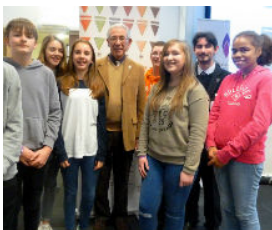
Ernest Simon and Barnabas with pupils from Park Community School, Barnstaple.
A Holocaust survivor who witnessed the horrors of Nazi persecution of Jewish families shared his experience with Devon pupils and students as part of a memorial event at the University of Exeter.
Ernest Simon saw prayer books and Torah scrolls burnt in Vienna and escaped to the UK on Kindertransport just before the outbreak of World War II thanks to the desperate efforts of his father.
He told University of Exeter students and pupils from Exeter School, Chulmleigh Community College and Park Community School in Barnstaple about his childhood as part of conference held to mark Holocaust Memorial Day.
University of Exeter experts also led seminars on the Nazi regime, treatment of Germans and Austrians living in Britain during World War II and Jewish religious responses to the Holocaust.
Those at the conference were able to learn about modern day genocides in Darfur through a display of drawings by Darfuri refugee children. At the end of the day attendees read poems and wrote pledges on a “reflections” board.
The event, on 8 February, was organised by first-year history student Barnabas Balint, a Youth Champion Board Member for the Holocaust Memorial Day Trust. The aim was to educate young people about past atrocities and also to give them experience of university life.
Ernest Simon, who speaks in schools and colleges about his family’s experiences for the Holocaust Educational Trust, came to England alone in 1939 but was eventually reunited with his parents and brother. The family settled in Leeds, but his father was interned on the Isle of Man for a year as an “enemy alien”. It wasn’t until 1942 that they could all live together. Ernest and his brother both studied at Leeds University.
Teachers who attended were given resources so they can continue discussions about the Holocaust with their pupils, who are in Year 9, 10 and 11.
Barnabas, who hopes this will now be an annual event at the University of Exeter, said: “I am grateful to everyone who has helped make this conference such a success, and extremely proud of all the students from across Devon who attended.
“The students were all very mature and engaged really well with the challenging topic at hand. Speaking to them on the day, and reading the pledges they made, confirmed that it was a truly worthwhile experience, one that all have learned from and been inspired to work for a safer, better future.”
Karen Pollock MBE, Chief Executive of the Holocaust Educational Trust, said: “The Holocaust Educational Trust educates and engages students from across the UK, from all communities, about the Holocaust and there can be no better way than through the first-hand testimony of a survivor. Ernest’s story is one of tremendous courage during horrific circumstances and by hearing his testimony, students will have the opportunity to learn where prejudice and racism can ultimately lead.
“At the Trust, we impart the history of the Holocaust to young people, to ensure that we honour the memory of those whose lives were lost and take forward the lessons taught by those who survived.”
What conditions and ideas made the Holocaust possible? Holocaust Encyclopedia
UCL Centre for Holocaust Education
Huddersfield University Holocaust Visitors and Learning Centre
Teachers TV: Lesson Starters - The Holocaust Teachers TV
Holocaust Teacher Resource Centre
What was the Holocaust? - Key Stage 3 - The Holocaust Explained For 11-14 year olds
Learning About the Holocaust Through Journeys in Film Defiant Holocaust
The Holocaust: Bearing Witness Facing History and Ourselves
Unit Essential Question: What does learning about the choices people made during the Weimar Republic, the rise of the Nazi Party, and the Holocaust teach us about the power and impact of our choices today?
Scope and Sequence Facing History and Ourselves
Every Facing History and Ourselves unit or course follows a specific progression of themes. We call this our “scope and sequence” or “the Facing History journey.”
The journey begins by examining common human behaviors, beliefs, and attitudes students can readily observe in their own lives. Students then explore a historical case study, such as the Holocaust, and analyze how those patterns of human behavior may have influenced the choices individuals made in the past—to participate, stand by, or stand up—in the face of injustice and, eventually, mass murder. Students then examine how the history they studied continues to influence our world today, and they consider how they might choose to participate in bringing about a more humane, just, compassionate world. Our scope and sequence promotes students’ historical understanding, critical thinking, empathy, and social–emotional learning.
The Holocaust: A Learning Site for Students Holocaust Encyclopedia/United States Holocaust Holocaust Memorial Museum
Empowering Young People Centre for Holocaust Education UCL
The Centers approach makes complex issues accessible and engaging and helps teachers improve their practice in powerful and meaningful ways
Marking Holocaust Memorial Day (HMD) in schools has a huge impact on young people.
Click the link above for education resources.to help your school get involved and mark Holocaust Memorial Day. HMDT provides a range of assemblies, lesson plans and activities to help your students learn about the Holocaust, Nazi Persecution, more recent genocides and contemporary issues.
Our free resources contain everything you need to get involved with HMD, even if you are new to teaching this subject.
Our resources aim to help students to:
Learn more * Feel empathy * Be inspired to take action
If you have any questions about our education resources please email [email protected] or call 020 7785 7029.
Further teaching resources, support and ideas
Tools for Teaching and Learning Centre for Holocaust Education UCL
How Can We Teach About the Holocaust to Seven to Ten Year Olds? Eleanor Hersh Butler University, [email protected]
Teaching the Holocaust - Elementary to Secondary Toronto University
Audio-Visual Resources
Lesson Ideas
Documentaries
Video Testimonies and Personal Experiences
How Young Is Too Young to Teach My Child About the Holocaust? Ha’aretz
Experts talk of starting 'safely,’ of 'laying the groundwork,’ but how, and how young?
How do you explain the Holocaust to a child ilovelibraries
A world that remembers the Holocaust. A world without genocide. Holocaust Remembrance
Uniting governments and experts to strengthen, advance, and promote Holocaust education, remembrance, and research worldwide and to uphold the commitments of the 2000 Stockholm Declaration.
The importance of teaching and learning about the Holocaust UNESCO
Do we need to rethink how we teach the Holocaust? The Guardian
While the focus has been on teaching the dangers of racism, many students are left in the dark about the history and motivations for this troubling period
IT IS IMPOSSIBLE TO LEARN OR TO UNDERSTAND THE HOLOCAUST
WITHOUT DISCUSSING ANTISEMITISM,
SINCE ANTISEMITISM WAS CENTRAL IN NAZI IDEOLOGY.
WITHOUT ANTISEMITISM,
THE MURDER OF THE JEWS COULD NOT HAVE HAPPENED.
Go to ‘Antisemitism and the Nazis’
EDITOR’S NOTE:
A central question raised by many educators and students is why teach and learn about the Holocaust, which occurred 70 years ago, when other crimes against humanity have been and are are being perpetrated today?
THIS IS WHY.
Millions of people have been killed in the 20th/21st centuries as a result of
Nazi Genocide.
To understand what happened in the past and is happening now you need to understand
- What Nazi Genocide means,
- Where, when and how many were affected and how it occurs
To answer these questions we need to understand the Nazi Holocaust which finished in 1945 at the end of World War 2. 12,000,000 were killed, 6,000,000 (1,500,000 children and 4,500,0000 adults) of whom where Jews and 6,000,000 from other groups. Millions have been killed since this event.
The ‘PYRAMID OF HATE’ helps us to understand this event
Go to TIMELINE for the sequence of events after the Nazis took power
Expand your viewpoint by going to
What Did the World Know? - Holocaust and Human Behavior, Chapter 9
The depth of study will depend upon the teachers objectives and time and facilities available. The group can vary from children to those studying for different degrees to lectures/talks to adults. ( see ‘A Teachers Guide to the Holocaust’ below). This will determine the site material required and used.
See also
War Crimes, Genocide and Crimes Against Humanity
News about War Crimes, Genocide and Crimes Against Humanity, including commentary and archival articles The New York Times.
The Holocaust and Other Genocides, International Holocaust Remembrance Alliance
List of Dictatorships by Death Toll - The Top 10 Biggest Mass Killings in History AboutHistory.com
5-6 Million Jews were Murdered
by the Nazis in World War 2
(the Holocaust)
THE
INCREDIBLE
STORY OF THE JEWISH PEOPLE
WHY TEACH THE HOLOCAUST WHICH HAPPENED
ABOUT 80 YEARS AGO?
THE HOLOCAUST
BBC Bitesize KS3
The Holocaust is the most infamous genocide in history.
It came close to wiping out the entire Jewish population of Europe
but questions remain over who has a share in the responsibility for it.
